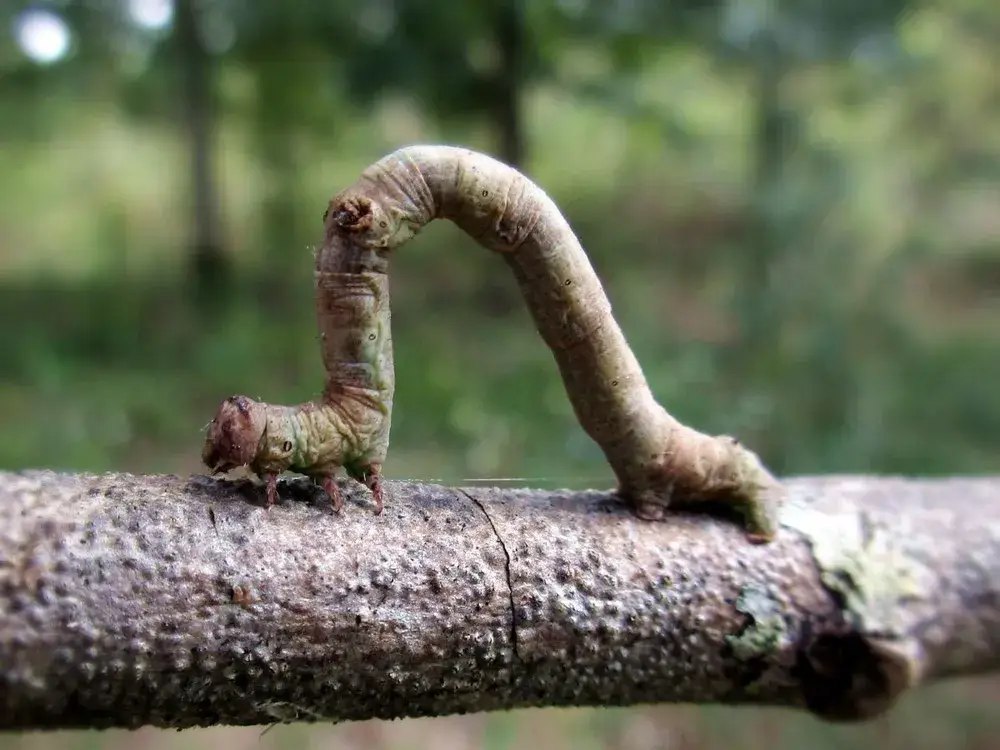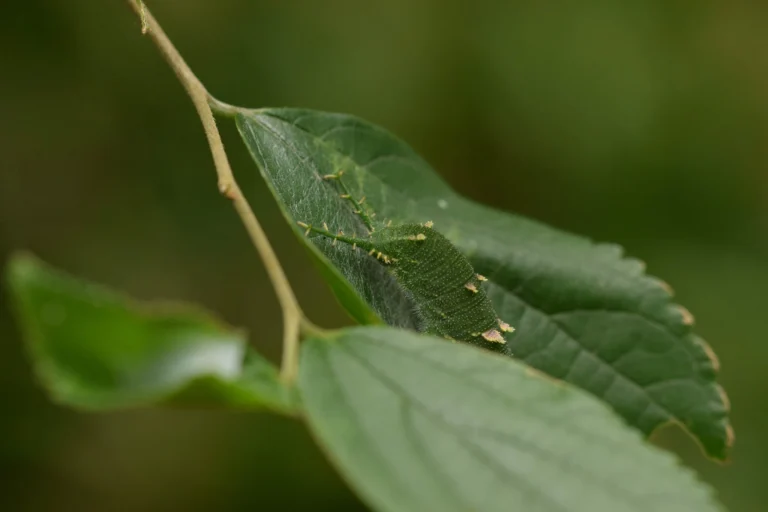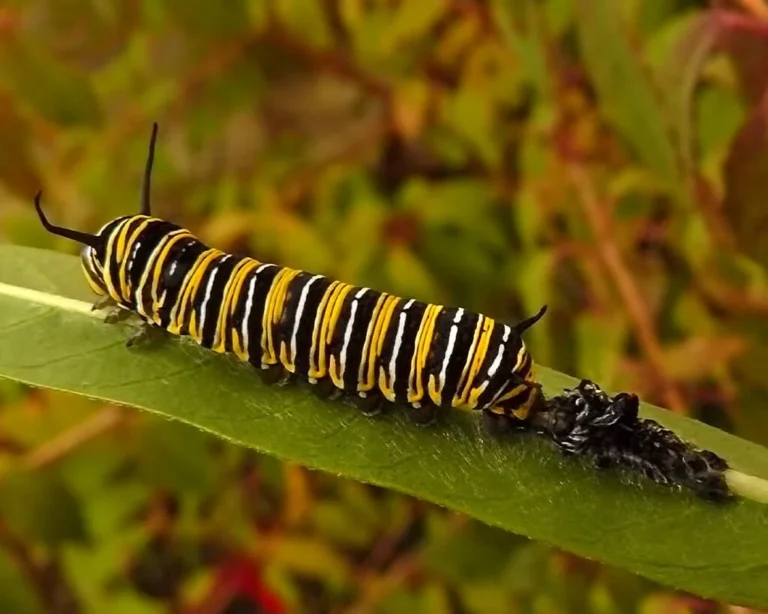Discover Stick Caterpillars & Their Moths: Nature’s Camo Experts
Stick caterpillars are young insects that look like small sticks to hide from animals that might eat them. They’re great at blending in, using their shape, and even changing colors to look like the plants they live on. They mostly eat leaves and change into moths, like the peppered moth, as they grow. They might bite, but they are mostly not dangerous to people. Some can be harmful, but most are safe to touch.
Table of Contents
Introduction
Have you ever looked at a tree branch and been surprised to see it move? Well, that might have been a stick caterpillar! These special insects, belonging to a unique species of moth, are experts at hiding. By looking like twigs, they stay safe from hungry animals. In this article, we’ll explore the world of these tree-mimic grubs.
We’ll talk about where they come from, the moths they turn into, and what they like to eat. Along the way, we’ll also learn if they are safe to touch and if they can bite.
So, let’s start our journey into the world of these amazing twig-lookalikes!
Definition and Overview: What is a Stick Caterpillar?
A stick caterpillar is a young insect, and it’s not yet fully grown. Just like how butterflies start as caterpillars, some moths also begin their life as caterpillars. And the special thing about these caterpillars is how they look.
They don’t look like regular, squishy caterpillars. Instead, they look like small sticks or twigs. This special look helps them hide from animals that might want to eat them.
When they grow up, they turn into moths. Moths are like butterflies, but they usually come out at night. The moths that these stick caterpillars turn into also have their own tricks to stay hidden.
But for now, it’s good to know that when you see a twig moving on its own, it might be one of these cool caterpillars!
Moths with Stick Caterpillars: A Spotlight
Peppered Moth (Biston betularia)
Have you heard of the peppered moth? It’s one famous moth that has a caterpillar looking like a stick. Here’s a bit more about it:
Where They Live: You can find peppered moths in places like the UK, the US, and other parts of North America. They like to live near trees and bushes, making them a common species of moth in these regions.
How They Look: Their caterpillars look just like bark and twigs. This look helps them hide really well. When they grow up, the moths have a special color pattern. It looks like they have been sprinkled with pepper, and that’s how they got their name!
What They Eat: These twig mimics from this moth love to eat leaves. They enjoy munching on leaves from trees like birch, oak, and poplar. They also eat leaves from plants like hawthorn and black currant.
Geometrid Moth
Here’s another moth with stick-like caterpillars:
Where They Live: These moths and their caterpillars can be found in many places around the world.
How They Look: Just like the peppered moth caterpillars, the young ones from this moth look like sticks. They have a simple look that makes them hard to spot.
What They Eat: These caterpillars aren’t picky eaters. They eat leaves from many different trees and shrubs.
Bagworm Moth
Last but not least, let’s talk about the bagworm moth:
Where They Live: These moths are quite special. Their caterpillars make little bags or cases to live in. These bags help them stay safe.
How They Look: While they might not always look exactly like sticks, their bags can sometimes look like tiny twigs.
What They Eat: They eat the leaves from various trees and plants. But what’s fun is that they carry their little homes (the bags) with them as they eat!
The unique features of the Bagworm moth can be somewhat reminiscent of the captivating Giant Leopard Moth, which is well worth exploring for those interested in the vast world of moths.
Advanced Camouflage Techniques
How They Hide Using Their Body
Stick caterpillars are like magicians. They have special ways to hide so that hungry animals can’t see them. One trick they use is their body. By staying very still and stretching their body out, they can look just like a twig.
This trick is called postural camouflage. Some stick caterpillars are so good at this that they can even look like bird droppings!
Changing Color to Match
But that’s not their only trick. Some stick caterpillars can change the color of their skin to match where they are. This means if they are on a green leaf, they can turn green. If they are on a brown twig, they can turn brown. This is a neat trick, and it helps them hide even better.
What’s amazing is that they don’t need to see the color to match it. Their skin can “sense” the right color, and they change accordingly.
Are Stick Caterpillars Poisonous? And What About Their Bite?
When thinking about caterpillars, a common question many people have is, “Can they harm me?” Let’s uncover the truth.
Poisonous vs. Venomous
Firstly, it’s key to understand the difference between poisonous and venomous. If something is poisonous, it might harm you if you touch or eat it. Being venomous means it can inject venom, usually through a bite or sting.
Most stick caterpillars are neither poisonous nor venomous. Instead, they depend on their camouflage, rather than toxins, to stay safe. While there are caterpillars in other families that can be harmful when touched, this isn’t common for twig mimics.
You might also be interested in learning If monarch butterflies are poisonous.
The Bite of a Stick Caterpillar
Stick caterpillars can “bite” in a way – they chew leaves. But they aren’t known to bite humans or pets. Their mouth is made for eating plants, not for defending themselves. If you held one, it would probably try to run away or just stay very still and hide.
Even so, it’s smart to be careful with any wild creature. Some people might be allergic or have sensitive skin when they touch certain caterpillars.
Studies on Caterpillar Toxicity
Research from entomological institutions generally suggests that while there are caterpillars with stinging hairs or spines that might irritate skin or cause more serious reactions, stick caterpillars don’t usually cause such issues. They’re mostly safe, but as always, caution is advised.
Stick Caterpillar Moths: Beyond Caterpillars
Moths, often overshadowed by their more colorful counterparts, butterflies, have their own unique allure. When we talk about stick caterpillars, the fascinating journey doesn’t end once they transform. Their metamorphosis offers yet another natural spectacle.
Description of the Peppered Moth and its Color Variants
The Peppered Moth, scientifically known as Biston betularia, is perhaps the most famous example of a moth that comes from a stick caterpillar. It’s a creature that embodies the wonder of nature’s adaptability. They come in several color variants:
- Biston betularia f. typica: This is the lighter variant of the moth, resembling the appearance of peppered light hues.
- Biston betularia f. carbonaria: This darker variant stands out, appearing almost as if sprinkled with charcoal.
- Biston betularia f. insularia: A middle-hued variant, it sits between the light and dark forms, offering a balanced, intermediate appearance.
Evolutionary History: Adapting to the Industrial Revolution
The Peppered Moth is famously known for its rapid evolutionary response to the changing environment during the Industrial Revolution. As soot and pollution darkened the trees and buildings in urban areas, the darker moths, or the carbonaria form, had a survival advantage.
They blended in better, avoiding predators. In contrast, the lighter typica form was more predominant in less polluted, rural areas. This adaptability showcases nature’s resilience and ability to evolve in the face of environmental changes.
Predators and Lifespan
Life isn’t easy for the Peppered Moth. With a lifespan of about a year, these moths have to evade numerous predators. Birds like nuthatches, robins, and flycatchers are among their primary hunters.
Yet, despite these challenges, the Peppered Moth has thrived, largely due to its ability to camouflage effectively within its environment.
Role in Urban and Rural Ecosystems
When we think about cities with tall buildings and the countryside with big trees, can you imagine that the same caterpillar might look different in these places? Let’s discover how and why!
City Moths vs. Countryside Moths
In the countryside, where trees are clean and the air is fresh, the Peppered Moth wears a light-colored coat. It looks a bit like sprinkled salt and pepper. This light color helps it hide on tree bark that isn’t dirty.
But in cities, where there’s a lot of smoke and soot, the same moth wears a dark coat. Why? Because it helps them hide better on sooty trees and walls.
Changing with the Times
Moths and caterpillars have to be smart. As cities grow and lights shine brighter at night, these little creatures change their habits. For example, in cities, they might eat different plants or come out at different times.
This is because of the big bright lights and the warmth in the cities. It’s like when we change our routine in the summer because it’s hotter or in the winter because it gets dark early.
Ensuring the Future: Conservation and Habitat Enhancement
Do you have a garden or a small space with plants? If yes, you can help these caterpillars and moths have a cozy home. And if you don’t, maybe you can inspire others! Let’s learn how.
Additionally, studying the White Witch Moth, with its expansive wingspan, can offer insights into the diverse types of moths that come from stick caterpillars.
Planting Shrubs and Ivy
Just like we love different types of food, caterpillars have their favorite meals too. By planting more shrubs and ivy, we give them lots of yummy leaves to munch on. Shrubs are like small trees, and they can fit even in tiny gardens. Ivy is a plant that climbs walls and looks pretty too!
Flowers with Sweet Nectar
Moths, when they grow up from caterpillars, need food too. They love the sweet juice, or nectar, from flowers. By having more flowers in our gardens, we give these moths a tasty treat.
And guess what? When moths visit these flowers, they help in making more flowers by carrying pollen from one to another.
So, by adding a few plants and flowers, not only does our garden become beautiful, but we also give a safe space for these bark-lookalike caterpillars and moths to live and grow.
Fun Facts About Stick Caterpillars
- Twig Twins! – These Camouflage larvae are so good at looking like twigs that sometimes even experts get fooled.
- Not Always Still – While they often stay still to hide, when they move, they do it in a wiggly, wavy manner. This is fun to watch!
- Color Changers – Some Stick-like caterpillars can change their color a bit to match the plant they are on. This is another of their sneaky tricks to hide.
- Late Bloomers – These caterpillars take their sweet time. They stay in their cocoon all winter long and come out as moths only when it’s warmer.
- City vs. Country – In cities, where it’s dirty, some related moths are darker. In the countryside, they are lighter. This is their way to blend in better.
- Not Just Leaves – While they love munching on leaves, some also nibble on flowers. Yum!
- Eyes Everywhere! – Some of these forest-floor caterpillars have spots on their bodies that look like eyes. This scares away birds and other animals that might want a snack.
- Stretchy and Strong – Though they look delicate, These twig mimics have strong and stretchy bodies. They need to be tough to hang onto branches during windy days!
Final Thoughts
Wow! We’ve learned so much about stick caterpillars, haven’t we? From their sneaky ways of looking like twigs to the moths they become, it’s clear they’re truly amazing.
Remember the fun facts? In the city, moths might wear dark coats, while in the countryside, they prefer light ones. And how they love munching on leaves when they are caterpillars and sip sweet nectar as moths.
But the coolest part? We can help them! Just by adding some plants in our gardens or even pots on our balconies. By doing this small act, we give them a home and food.
Nature is full of wonders, and stick caterpillars are one of them. By understanding and helping them, we show that every small creature has a big story. So, the next time you see a twig move, smile and say hello to our twig-like friend!




